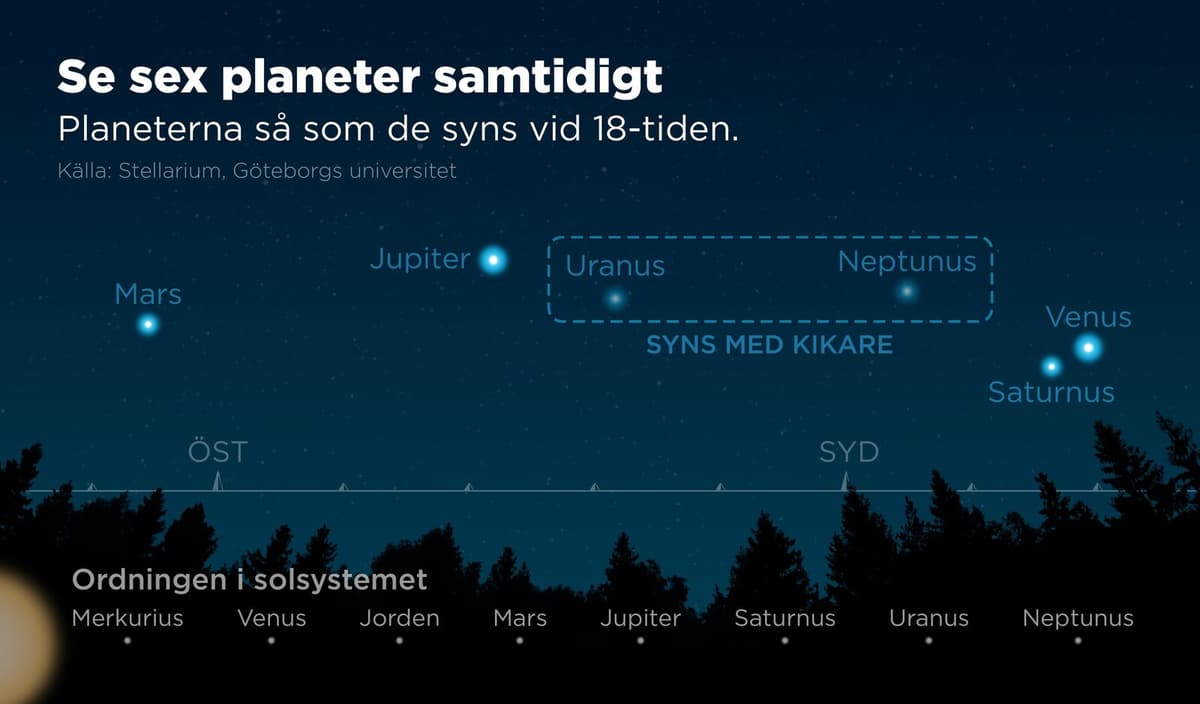Maria Sundin, astrophysicist at the University of Gothenburg, has been out looking at the band of planets several evenings lately.
It's very beautiful. Already when it gets dark in the afternoon and the sky is still dark blue and not pitch black, you can see several planets shining, she says.
Easy to find
Early evening, around 6-7 pm, four planets are visible to the naked eye, provided the weather is clear. Venus, which is also called the Evening Star, is the first one that can be seen when it gets dark.
It's visible in the southwest and is very easy to find. There's nothing else you can mistake it for, says Maria Sundin.
Right next to Venus, you can see a much fainter dot: the giant planet Saturn. Eastward in the sky, Mars appears, slightly reddish and almost as brightly shining as Venus. Between Venus and Mars, but higher up in the sky, the strongly shining Jupiter, the largest planet in our solar system, shows itself.
Venus and Saturn set around 9 pm, while Jupiter and Mars are visible almost all night, moving towards the west.
Requires help
The two outermost planets in the solar system, Uranus and Neptune, can also be observed now in January. But it requires a pair of binoculars or a telescope to discover them.
The only planet that cannot be seen is the innermost, Mercury. It will be visible in the evening at the beginning of March, but is harder to detect than Venus, Saturn, Mars, and Jupiter.
Maria Sundin notes that it's not unusual for four or five of the planets to simultaneously be within clear sight for us earthlings, even if it doesn't happen every year. And during the long, dark January evenings, it naturally becomes easier to discover them – and photograph, for those who want to.
Mobile cameras have become so good that many can photograph the northern lights and spread them on social media. Let's hope that photographing planets will be the next big thing, says Maria Sundin.





